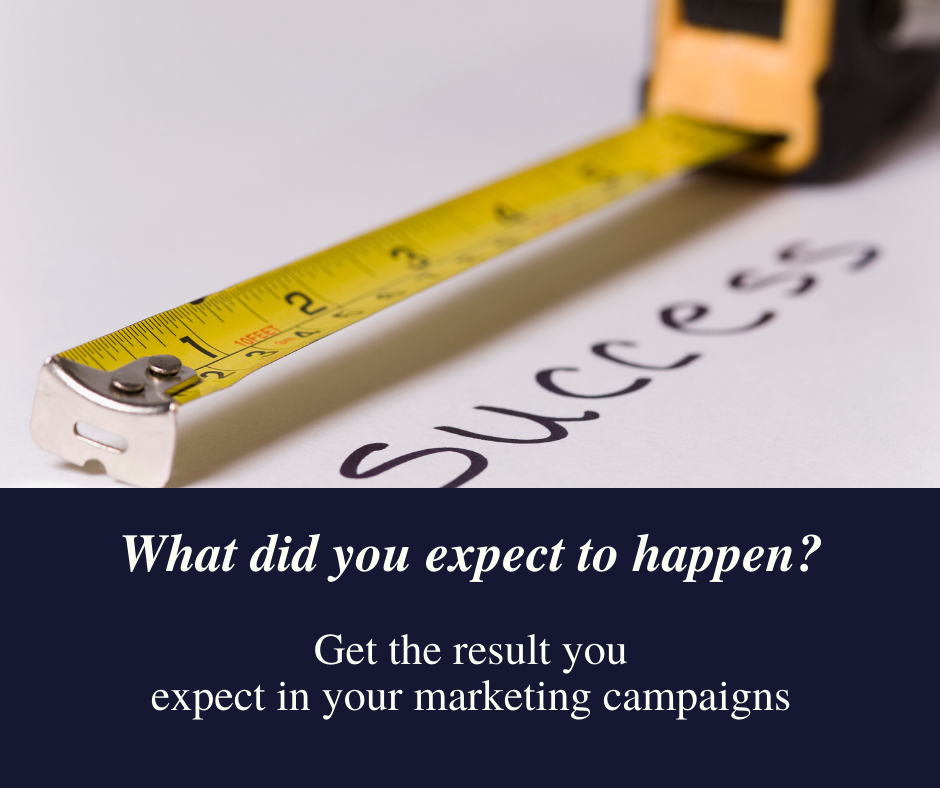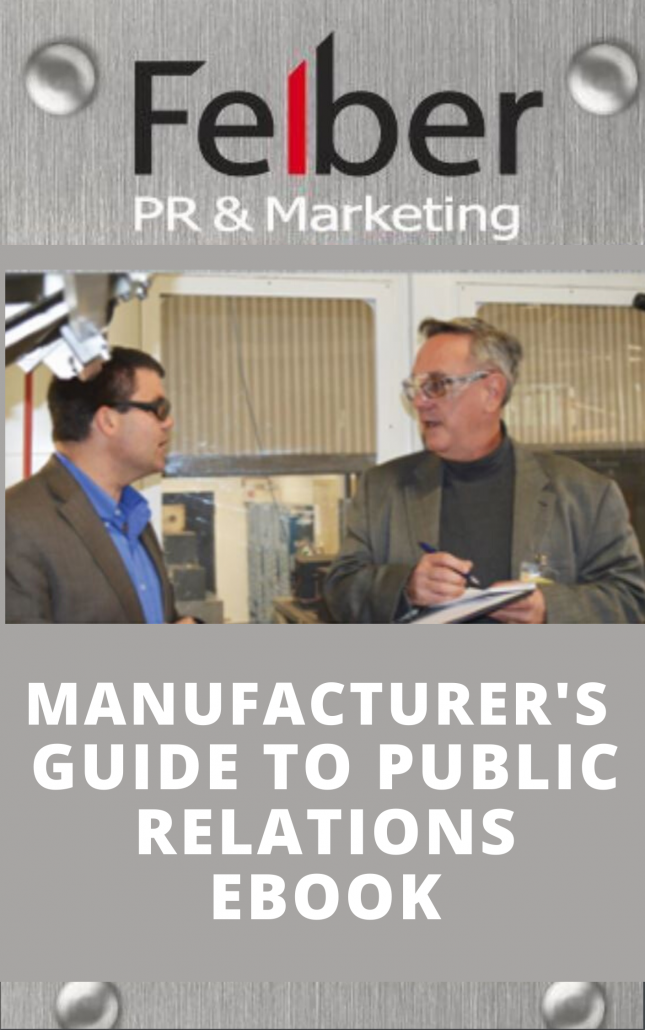What Did You Expect to Happen? Get the result you expect in your marketing campaigns

Simple question, with a not-so-simple answer. We ask this question to our customers and prospects alike, and the answer will surprise you. As manufacturing companies build their marketing plans, they use email marketing drip campaigns, industrial public relations, inbound content marketing, and advertising tactics. Now, you might be thinking the answer is sales, and you would be right if you connect the dots. The problem is the dots or “steps” in your plan are disconnected.
Do you know what to expect when, and how it will be measured? Knowing what success looks like and what you expect will be critical 9 months from now when you are asked in a meeting, “is your program working?”
Major tactics and the most common gaps in each
Email campaigns are still one of the most used and effective in modern marketing. You control the content, who by persona you are targeting, and the result you want to happen. With most contract manufacturers, your sales cycle is long, 12,24 even 48 months in some industries. Email marketing lets you maintain a relationship with your prospect, impart expertise to make your case, and at the end of the day, measure engagement. Engagement is your window into who is interested and who is not inside your CRM. With reporting, you can measure who is active, who is reading your emails, visiting your website, downloading your technical papers, and even reading the quotes you sent. Engagement is the measurement on the path to sales and answers what we want to happen by this activity.
Industrial public relations are often one of the most misunderstood tactics. We hear “We just want to make a splash. We want prospects to know our name,” OR “we want to send a press release. OK, why? I ask again, what do you expect to happen when you send a press release? Most manufacturers think a press release is an article, it is not. Or, the simple tactic of sending a release drives the sale, again, no.
Getting coverage in a coveted trade magazine, with a high circulation that matches your target audience is the first step.
That said, the purpose of a press release is to get the attention of the editor so that they consider writing about your company news. A more direct approach is pitching proprietary case studies to a publication. A case study, prominently featured, drives interest and website traffic. This is the dot you are looking to connect. The measurement hence is a lead capture structure inside your website that gathers the lead information. Then (see email marketing above), you can begin the process of engagement leading to the ultimate measurement, that elusive sale. One note of caution, public relations is a long-game tactic. With editorial cycles and magazine issues planned months in advance, you need to be ready for the success that is measured in years, not weeks.
Inbound content marketing is the process of drawing prospects to your company through content they want to read. Content that solves their problem. Here, drafting content about your products and services, highlighting the problems you solve is key. One of my favorite responses to “our prospects are not on the internet or our business is just so niche” is Engineers worth their salt and under 40 Google everything. And, these engineers are not at their desk; they are on the manufacturing floor, solving problems and searching the internet from a device. Wouldn’t you want to be the solution they see first? Like public relations, this content strategy needs to have a system to capture these leads and begin the measurement process. One of your dots can be more leads and measurement here is easy. Read: Why Manufacturers Need a Content Map for Inbound Marketing Success Now, you can answer the question of why you are researching, writing, and publishing content on your blog. Justification of your spending on content generation is easy when you can show the leads and sales generated.
Advertising (print, pay-per-click, paid social) comes in as many facets as there are ways to spend your budget. With leads and engagement in mind, now that you have seen the rationale above, advertising can yield immediate results. All ads can impact name recognition, elicit a response and uncover hidden needs with your prospects. LinkedIn paid social ads for example generate leads in real-time (very measurable). Imagine calling an interested prospect within minutes of their response. This is what is supposed to happen in advertising campaigns – lead generation.
See this article on why digital advertising is very relevant in the no-trade-show-pandemic world we’re living in currently. Why Manufacturers Should Invest in Digital Advertising Right Now
The dots in this process include voice of customer assessments, copywriting, graphic design, photography, and video – all the tools an advertising campaign needs. This should help you support your budget request, as you can show the results.
Let’s discuss today what expectations you have for your marketing plans for the remainder of 2021. Call Rob Felber (330) 963-3664 or email RobFelber@FelberPR.com to arrange a time to speak.


Leave a Reply
Want to join the discussion?Feel free to contribute!